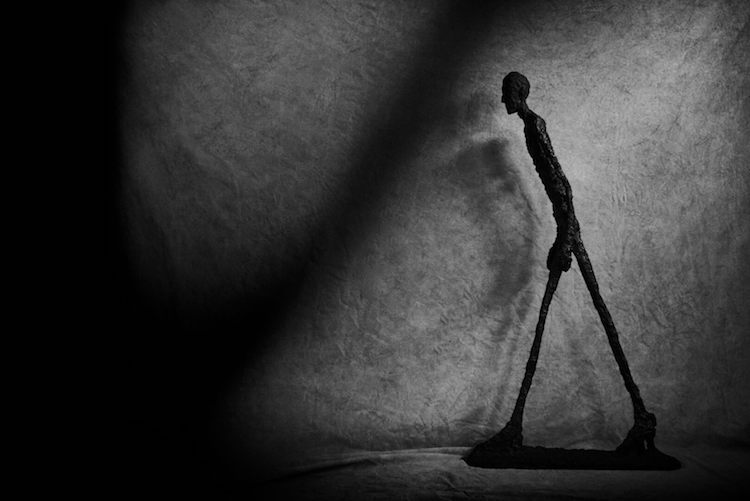To beat coronavirus, get Americans back to living natural lives.
The Rethink We Need to Avoid America’s Collapse

Connecting the dots of complex systems breaks the conservative impasse.
On September 17th the global financial system’s plumbing sprang a major leak. The cost of short-term (usually overnight) lending skyrocketed suddenly to more than 10%. In just two days the Federal Reserve injected a massive $128 billion into the global financial system via the overnight lending market in an effort to maintain cash liquidity for corporations and banks. (As of this writing, they are still pumping away.)
The financial and business media were abuzz with attempts to explain the sudden crisis in cash availability. Was it a transient effect of corporations withdrawing money from short term money market funds to pay quarterly taxes in the U.S. on the 15th? Or of a large Treasury bond auction settling at the same time? Did the transient but severe spike in oil prices immediately after the attack on Saudi Arabia trigger margin calls in oil futures markets, requiring those who had sold futures to come up with U.S. dollars to meet their obligations?
Some analysts noted more structural factors, ranging from the Fed shrinking its excess currency and bank note reserves, which in turn shrinks cash available for overnight lending to banks, to shifts in foreign capital, to geopolitical issues. Others noted that there had been growing rate instability for some time that flew under the radar of most observers.
One thing that is clear is that regulatory measures instituted after the 2008 financial crisis not only didn’t work to prevent this short but severe shock—by incenting Federal Reserve measures and imposing higher cash requirements on banks and corporations, they almost certainly contributed to it. Add in all the other factors cited and what emerges is a picture of serious fragility in a major global system. Some economists predict the Fed will need to inject $150 billion of liquidity every year to keep it functioning.
We rely on increasingly interconnected, interdependent systems today. Beneath and enabling them is a range of highly disruptive technologies that have upended social, political, financial and other dimensions of our daily lives. Those frustrated with the interminable debate over how to “take back” America must walk away and address a new reality. To do that requires understanding how what we are facing challenges the very terms of that debate.
Hubris on the Left, Blindness on the Right, Americans on the Firing Line
It’s not only the financial system that is stressed right now. Western civilization is in deep foundational crisis.
On the left, hubris is on full display in the progressive assumption of moral superiority and their ability to control the world and its future: overweening pride, seeking to impose their will and lashing out in murderous rage when opposed.
On the right: an empty message, melancholy paeans to a putative former age of American opportunity and virtue. The ancient poet Homer, whose heroic epics nostalgically depict a war from a long past era, was said to be blind. His successors in the establishment Right are blind to the impact of the last decades on many Americans: blind to their complicity in it, singing their songs for the patrons who provide them a place near the hearth.
And ordinary Americans have suffered from both. Hollowed out communities, jobs, lives in the heartland. Coastal cities that have long since descended into nihilistic savagery, with a gloss of carefully protected elite glamour riding on top like congealed grease on slowly putrifying broth.
The crisis is acute and systemic.
And it is far from limited to America, or to other individual countries in the West. One need only look at the erosion of the post WWII transnational institutions to see the scope of what faces us. The administrative elites who built those institutions, identify transnationally, and gained elite status as a result, continue to benefit from them. Ordinary citizens are harmed. The situation is untenable.
The rise of the uniparty in the American political class reflects a tacit understanding that old dichotomies—the collective vs. the individual, social responsibility vs. individual free choice, state control vs. free markets—no longer address the new reality.
When the will to power meets nostalgic ennui, power tends to win. The progressive Left is hellbent on asserting power and imposing its will. Any alternative requires new ways of analyzing events and new categories, within which to frame a message that shapes a hopeful future where men and women and communities are both free and responsible to one another.
We can derive some clues from an ancient catastrophe and a very new scientific discipline.
When The Unthinkable Occurs
It’s 1192 BC and on the eastern edge of the Mediterranean the small kingdom of Ugarit is thriving. And why shouldn’t it? Favored with a sheltered deep port, sitting at the intersection of the great imperial spheres of influence—Egyptian, Hittite, distant Mesopotamia—adjacent to a string of small kingdoms along the Mediterranean coast, Ugarit is a central player in a vibrant international economy. Its kings have deftly balanced tribute and alliance with this and that larger empire, essentially maintaining independence. No one wants to disrupt the critical trade that flows through Ugarit’s harbors and out to the neighboring lands. Above all no one wants to disrupt the flow of tin, crucial for making weapons-grade bronze, and of finished bronze and other metal ingots. But the pottery, precious stones and crafted goods that come into Ugarit from Crete and the Minoans, and from more exotic places yet, also find eager buyers. It’s a sophisticated time, a time of international trade and cultural exchange, of prosperity and power.
Near the Royal Palace sit the houses of wealthy merchants and government officials. To the east lives Rapanu, whose records—written in multiple languages—show his network carried diplomatic correspondence southwest to the Pharaoh in Egypt and northeast to the Hittite viceregent at Carchemish. Some of those letters allude to problems with the so-called Sea People. But the bulk of his records show a lively, multifaceted trade in metals, pottery and other goods which he sells to distant places by sea and over land. Sea travel is relatively safe, from natural threats at any rate. Ships sail with the seasonal winds, hugging the shoreline from the Aegean, around the eastern shores of the Mediterranean and west. Overland travel is more difficult and dangerous, requiring high quality donkeys. Rapanu employs a skilled staff who breed, train and manage his herd, some of which the Royal Palace purchase for the state’s own trade efforts. Nearby live other merchants and officials. Yabninu, a wealthy trader and previously the regulator of trade within the vast administration of Ammittamru II, holds military rank in the elite Mariannu. Rasap-abu, less wealthy but also a member of the Mariannu and supervisor of the harbor, receives customs duties and provides the palace with an inventory of imported goods and materials. The prefect Urtenu engages in extensive correspondence with farflung contacts in Egypt, all of the major Phoenician ports, the inland areas of Syria, Babylon, and Hattusa, capitol of the Hittite empire.
Two years later the city would lie in ruins, its great buildings reduced to rubble and ash. It was never rebuilt.
A variety of explanations have been advanced for the collapse of the brilliant, Late Bronze Age civilizations—civilizations whose multinational, multicultural, technological, economic, diplomatic, and urban sophistication would not be seen again until the twentieth century AD. Perhaps it was due to climate change, to extended droughts. Or to the invasions of the Sea Peoples. Perhaps cities were ravaged by epidemics spread via unprecedented transportation of goods and people. Perhaps environmental destruction destroyed food sources as intensive agriculture demanded greater and greater areas of cultivated land.
But the most compelling explanation is overall systemic collapse. The Mid and Late Bronze Age civilizations were built on interconnected systems of trade, diplomacy, military alliance, agriculture, and cultural diffusion. As they became increasingly complex, they outgrew the ability of the ruling classes to control them and became more brittle. Here and there, this and that challenge proved destructive until the whole set of interconnections collapsed.
Today a new discipline, the study of complex adaptive networked systems, shows us how such collapse occurs—and suggests a new focus for thinking through America’s preservation.
Complexity: The Whole is More Than the Sum of Its Parts
Have you ever pondered the mystery of slime molds?
Me neither. But for many years biologists were deeply puzzled by the emergence and disappearance of them on forest floors. They spring up among rotting debris, slowly move about, sprout spore bodies, and then—disappear for a while. Mycologists noted that their emergence seemed linked to moisture and acidity on the ground. But despite decades of search, they were unable to identify the controlling cells, the equivalent of a nervous system, that coordinate slime mold behavior.
And that’s not surprising. Despite the appearances, slime molds are not actually organisms. Instead they are what complexity theorists call a “complex adaptive system.” They are “complex” because they emerge from a very large number of interactions among a large number of elements (cells). The cells are “adaptive,” i.e. they have different behaviors depending on a constellation of conditions immediately surrounding them. Those conditions include moisture and acidity, but also the presence of other cells that influence those environmental factors. The result is a “system,” a set of things that interact so as to produce repeated behaviors.
Complex systems exhibit behaviors that are often non-intuitive to us. You may have heard of the so-called “butterfly effect” in which a small behavior like a butterfly flapping its wings allegedly could affect weather half a world away. That’s an exaggeration, but complex chaotic systems do have sometimes very non-linear, non-proportional behaviors in response to small changes. Sophisticated fluid dynamics equations capture this in many cases.
If the system elements are adaptive, however, you can’t predict its behavior with equations. You need to run massive computer simulations programs in which software agents programmed with the element behaviors interact over many iterations.
This is the basis for “agent based modelling” built with cellular automata—bits of code that interact with each other according to rules. The more sophisticated agent based models program software elements with a degree of uncertainty in their behavior. In other words, the agent’s response to events and circumstances is drawn from a probability distribution rather than being hard wired—a degree of freedom of choice, as it were. In either case, it requires hundreds of thousands of interaction steps, and often many more, to get something resembling stable system behavior. Change small initial conditions, do it again, and you’re likely to get different behavior. Do it again and again and again and again and you might see some general similarities.
When the elements of a complex system are adaptive, i.e. have varying behaviors, the resulting complex adaptive system’s overall behaviors are said to ‘emerge’ from those complex interactions. They can’t be predicted directly. And that means that they can’t be directly controlled, because in order to control a system, the system’s response to interventions must be predictable.
Let that sink in. What cannot be predicted cannot be controlled. Influenced, perhaps. But not controlled.
If I heat a sealed container of water on my stove, it will contain a very large number of water molecules. The added heat causes those water molecules to move more and more rapidly and to bounce against one another, resulting in increased pressure on the container walls. (Warning—don’t try this at home.)
But that water does not form a complex system. The laws of thermodynamics from physics accurately predict just how much heat transfer is required to produce a given increase in pressure. The water behaves according to predictable equations, in the aggregate and consistently over repeated attempts. The whole is the sum of its parts.
Complex adaptive systems do not behave according to predictable equations. In such systems, the whole is significantly bigger than the sum of its parts and has its own behaviors.
Slime molds are at the low end of complexity. We are surrounded by, have constructed, and are made up internally of much more complex systems. Systems like economies, and social communities, and infrastructure that links continents, and trade across those links. That has deep implications for thinking past today’s current political impasse, which we’ll explore in a moment. But first it’s worth pondering fireflies.
Connections: Fireflies, Fads, and Finance
Unlike the lowly and unappealing slime mold, fireflies flashing in summer twilight entrance and delight us. But in the latter 1990s, to then-graduate student Duncan Watts they also posed an interesting mystery.
When the male fireflies in a local area like your backyard flash, they do so in a synchronized rhythm. Add a new firefly to the mix who was flashing at a different rate and they’ll soon be back in sync—but often at a rhythm that is neither the original one of the local swarm nor that of the newcomer. How, Watts wondered, does that happen? What determines the new rate?
Fireflies are not easy to study. For one thing, they won’t flash in captivity. But Watts persevered and the results lay the groundwork for a new insight regarding complex systems.
It seems that fireflies form social networks, relationships that persevere and influence their behavior even when the flies involved are not physically close to one another. As the new fly is introduced, he and those near him begin to synchronize their flashing. But they move out of physical proximity before the synchronization fully occurs. Each of them then begins to sync with and influence the flies temporarily nearby—but also with those they’d begun to connect with earlier, even if they happen to be on other sides of your back yard by now. Over time the new flash rate emerges out of highly complex sequences of interactions in all directions of the local group.
Fireflies, it seems, form complex adaptive networked systems. Some complexity has internal network structure.
With this crucial insight, a new discipline emerged. Once we knew what to look for, we began to realize that complex adaptive networked systems are all around us. Natural ones like ecologies—and the neural interactions of the human brain. Ones we’ve constructed: transportation networks that played a key role in the spread of potentially deadly H1N1 influenza virus in 2009’s outbreak that threatened to become a global pandemic. Power generation and transmission networks that can unravel widely due to damage in one location. Communications networks: phones, the internet, the Web that sits atop them. Financial networks that link consumers and small businesses across continents through the services of intermediaries like Paypal, credit cards, and bank transfers. Social networks of all sizes and geographical distribution that in turn promulgate influential memes and fads.
And societies that incorporate these and many more.
Combine these networks with deeply disruptive technologies like powerful visual processing in smart phones, artificial intelligence supporting deep predictive analytics, and the emergence of Big Tech monopolies facilitating their use. Apply them to build a rapidly expanding surveillance state and to put increasingly powerful, high tech weapons (including cyber capabilities) in the hands of rogue states and non-state actors. And do it while eroding the local natural connections that jobs, communities, and families have traditionally provided. The result is a recipe for civilizational collapse far greater than that of the Late Bronze Age.
Networks, and in particular adaptive networks, impact our lives today at every level from the local household to the increasing inability of transnational structures and agreements to provide stability and well-being to the citizenry of the West.
And not only of the West. Globally-oriented trade and other agreements have destroyed traditional communities and societies elsewhere as well. Radical Islamist terror networks and violent groups like Antifa are only two examples of the response such disruption triggers—and those networks are themselves enabled and empowered by modern technologies, financial networks, and other networked systems originally devised in the West.
If political thinking is to be effective in the face of the progressive Left’s collectivist juggernaut, it must address the centrality of complex adaptive networks in our lives today. Such networks have deeply disrupted the status quo economically, socially, and geopolitically. Anodyne talk of free markets (while corporations cozy up with regulators) and of the primacy of the individual (while ignoring the physical and virtual community contexts within which we all live as individuals) has deeply failed. The current populist wave that elected Donald Trump to the White House is one evidence of that.
But what can we say about complex adaptive networks? Political theorists are not, for the most part, prepared to delve into the mathematics of modern network science. Fortunately, they don’t need to be. What follows are a few insights that can already be gained from this new discipline. They present a challenge and opportunity for new political thought.
Fragility and Resilience
In 2003 bad weather caused several power plants in rural Italy to go offline. Within 12 hours, 56 million people in two countries were sitting in the dark with no internet access. Although the blackout occurred shortly after allied force entered Iraq (many of them staged through Italy), no evidence of terrorism or sabotage was found. After some finger pointing the whole thing was quietly buried in a bureaucratic report.
Buried, that is, until 2009, when two very senior physicists who had turned their attention to complex adaptive networked systems took another look at the data. Chaos theoretician Shlomo Havlin and International Boltzmann Medal awardee Eugene Stanley uncovered a key, counterintuitive behavior of such networks.
Look at a network as an isolated system. It’s fairly easy to identify the elements, or the links between elements, whose removal would most impact the network overall. Damage a node (element) that is highly connected. Damage links between highly connected nodes that otherwise don’t share links in common.
If you want to damage the Web, take out Google. If you want to throw a modern, highly developed country into chaos, attack a key city. If you want to cripple Osama bin Laden’s terror network, assassinate the most senior official who is visible, third in the hierarchy.
But that’s not what happened in the 2003 Italy blackout, because modern networks don’t stand in isolation. They interconnect and depend on one another, like the power grid and internet do in most Western nations. Internet nodes require power to operate. But the internet in turn is used to monitor and control the power grid in many countries. When those local plants in Italy went down in 2003, a regional internet node also failed because it lacked a backup power system. And that created problems in the wider power grid. Which affected more internet nodes and…well, you get the picture. A cascade of accelerating failure that spread much more widely than the initial damage.
Complex adaptive networks become fragile when they depend on a limited number of interconnections among them. Within a network itself, the same thing is true: if you use regulatory power to limit, say, the energy production options available to a community or state, you are introducing hidden fragility. At first it might seem that the power grid has become more efficient, or more ecologically sound. But you have made it much more susceptible to major unravelling collapse.
And a collapse of the power grid spreads to other systems. To hospital care after backup generators exhaust their stored fuel. To the transportation grid that resupplies food and medicine to large cities. And after a time, to public health. We all owe a great debt of gratitude to the Cajun Navy and other volunteers whose prompt rescue work helped avert a potential major crisis of dysentery and more after Hurricane Harvey flooded the houses, stock yards, and refineries of Houston, TX in 2012.
Look around and you will find many instances where the regulatory state, Big Tech, and aggressive progressivism have introduced fragility into the very networked systems they celebrate as modern advances—and into society as a whole, including the minority communities they purport to protect and favor.
There are two opposites to fragility in complex networked systems. The first is resilience, the ability to absorb local damage without triggering a cascade of failure and unravelling. Resilience occurs in complex adaptive networked systems when there are redundant local connections. Our grandparents grew a few vegetables, if they didn’t simply live on farms. We rely on produce imported from several continents away. Our parents worked in jobs that were linked to other local and national companies in a local or national economy. The 1990s and 2000s saw many industries and jobs move overseas, making the dependence links between jobs here and those industries much more fragile. And when jobs are fragile, so are local communities, economies, and families.
Healthy ecologies host a variety of plant and animal species, suited to the climate and terrain. If weather shifts, or flooding occurs, some species may be affected but the ecology as a whole can continue to thrive and adapt. Resilience requires local redundancy.
Another opposite to fragility is anti-fragility, the ability to actually thrive as a result of uncertainty or change. In theory, free market economies under conditions of classical liberalism promote economic and social anti-fragility as they reward innovation and risk taking. But that analysis is fraught with blind spots when the networked nature of today’s context is acknowledged. This standard slogan of old school conservativism is blind to the cascade of second and third order effects that failure can introduce. To make the large scale complex adaptive networks that constitute communities, regions, nations, and economies anti-fragile requires first making them resilient. And resilience requires inefficiencies in the form of local and regional redundancies and diverse approaches.
Taking the Conceptual Initiative
The bad news is that Western civilization, and the traditional conservatism that considers itself the West’s true defender, face a truly existential crisis mediated in part by highly disruptive tech-based changes.
The good news is that we have the opportunity to change the conceptual terms of the political debate. To do so requires that we first accurately perceive and understand the workings of complex adaptive networked systems, increasingly interconnected and interdependent on one another, in our lives at individual, community, national, and geopolitical levels.
It means recognizing that the critical importance of the family occurs in the context of other networks, including virtual ones that conservatives tend to ignore or discount. It means re-evaluating economic policy with an understanding of the ways in which disruptive tech has undermined the ability of central banks to control currency values. It means demonstrating to American voters how we can re-weave new, resilient, diverse social and economic fabrics that support their dignity and well-being.
Our modern word “crisis” comes from the Classical Greek verb krinein, “to decide.” When a crisis emerges, it forces a decision. How will Americans disillusioned by the conservative impasse address the deep crisis facing Western civilization? The way forward must address the deeply interconnected, interdependent, complex networked nature of the world today—and of the fragilities that have been created in it.
The American Mind presents a range of perspectives. Views are writers’ own and do not necessarily represent those of The Claremont Institute.
The American Mind is a publication of the Claremont Institute, a non-profit 501(c)(3) organization, dedicated to restoring the principles of the American Founding to their rightful, preeminent authority in our national life. Interested in supporting our work? Gifts to the Claremont Institute are tax-deductible.
When we come at Silicon Valley’s kings, we best not miss again.
An address delivered February 10, 2021.
To fight prejudice, get the bureaucrats out of power.
Our proud nation and history deserve better.
Big Biz, Big Tech, & Higher Ed are not your friends.






